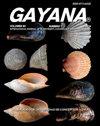智利南部城市环境中的饲养习惯和人们对仓鸮的看法(Tyto alba tuidara,J.E.Gray 1829):对保护的影响
IF 0.2
4区 生物学
Q4 ZOOLOGY
引用次数: 3
摘要
人们对猛禽的认知在很大程度上受到其内在价值、效用、神话和迷信的影响。特别是,负面看法可能鼓励偷猎和迫害这些鸟类,影响其保护状况。一种广泛分布在世界各地的夜间猛禽是仓鸮(Tyto alba, Tytonidae)。在智利,这一物种只在农村和郊区被记录和研究。然而,在瓦尔迪维亚市,谷仓猫头鹰存在于城市边界内。在这项研究中,我们记录了在瓦尔迪维亚城市筑巢的仓鸮的摄食习性,并分析了当地邻居对仓鸮的看法。为了描述猫头鹰的饮食特征,我们收集了2010年8月至2011年8月期间在猫头鹰筑巢树周围发现的所有颗粒。我们用一份调查问卷采访了邻居,其中包括关于猫头鹰的效用、道德或美学价值以及它们筑巢的树的问题。结果表明,仓鸮的主要捕食对象为长尾长尾长尾长尾长尾长尾长尾长尾长尾长尾长尾。邻居们对谷仓猫头鹰的好感主要是出于审美和道德原因,而不是功利原因。我们的研究结果表明,人们在城市地区的看法与农村地区不同,在农村地区,以前的研究表明功利主义价值观的盛行。这种积极的看法代表了促进城市保护和环境教育的巨大潜力,在人与环境中的自然元素之间建立了联系。本文章由计算机程序翻译,如有差异,请以英文原文为准。
Feeding habits and people’s perception of the Barn Owl ( Tyto alba tuidara , J.E.Gray 1829) in urban settings of Southern Chile: Implications for conservation
People’s perception on birds of prey is heavily infl uenced by its intrinsic value, utility, myths and superstitions. In particular, negative perceptions may encourage poaching and persecution of these birds, affecting their conservation status. One nocturnal raptor species widely distributed across the world is the Barn Owl (Tyto alba, Tytonidae). In Chile, this species has been recorded and studied exclusively in rural and sub-urban areas. However, in the city of Valdivia Barn owls exist within the city boundaries. In this study we documented the feeding habits of Barn owls nesting in urban settings of Valdivia, and we analyze the opinions of local neighbors toward the owls. To characterize the diet of owls, we collected all pellets found around their nesting tree on a monthly basis between August 2010 and August 2011. We interviewed the neighbors using a questionnaire that included questions about the utility, ethical or aesthetic value of the owl and the tree where they nested. Our results indicate that the main prey of the Barn Owl was the Long-tailed Colilargo (Oligoryzomys longicaudatus). The neighbors’ perception was favorable to the Barn Owl primarily for aesthetic and ethical reasons, and not utilitarian reasons. Our results suggest that people perception in urban areas is different than in rural areas, where previous studies showed the prevalence of utilitarian values. This positive perception represents a great potential to promote conservation and environmental education in the city, creating a link between people and the natural elements they have in their environment.
求助全文
通过发布文献求助,成功后即可免费获取论文全文。
去求助
来源期刊

GAYANA
Agricultural and Biological Sciences-Aquatic Science
CiteScore
0.60
自引率
0.00%
发文量
5
期刊介绍:
GAYANA is a scientific journal published by Universidad de Concepción, Chile. It is the modern version of Gayana Oceanología and Gayana Zoología. Therefore its numeration starts at volume 63(1).
GAYANA covers all aspects of zoology and oceanographic research. It is structured in five sections, defined by subject or discipline: Ecology, Biodiversity and Taxonomy, Earth Sciences, Evolutionary, and Applied Biology and Environmental Biology. Each section is in charge of an editor who receives and manages the manuscripts sent for evaluation in close collaboration with the editorial board.
 求助内容:
求助内容: 应助结果提醒方式:
应助结果提醒方式:


